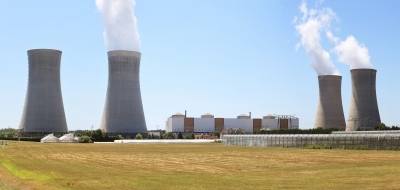
SOURCE Carnegie Mellon University
Shutting down nuclear power plants will have significant economic and environmental consequences, according to a new study by researchers at Carnegie Mellon University and DAI Management Consultants, Inc. Shifting from nuclear to other types of power plants could affec t the reliability of the electricity supply, electricity costs, air pollution, carbon emissions, and the reliance on fossil fuels like coal and natural gas, the researchers said.
The recent earthquake and tsunami that destroyed the nuclear power plants in Fukushima, Japan has led to an international reevaluation of policies related to nuclear power. Germany has decided to shutdown all nine of its nuclear power plants by 2022, and Switzerland will shutdown all five of its plants by 2032. Nuclear power currently supplies 25 percent of Germany's power, 39 percent of Switzerland's power, and 20 percent of the electricity consumed in the U.S.
"Turning off a single large nuclear power plant could require dozens of coal and gas-fired plants to ramp up production to make up the difference," said Paul Fischbeck, a professor of social and decision sciences and engineering and public policy at Carnegie Mellon. "These plants use fossil fuels, cost more to operate, and emit pollution that can lead to acid rain and ozone, and CO2, a greenhouse gas."
Fischbeck, a risk expert, added that some of the differences are large. "Replacing the Brown's Ferry plant in Alabama with a mix of coal and gas power plants would cause CO2 emissions to increase by approximately 24 million tons each year. That's the same as the annual emissions of over 4 million cars," he said.
To measure the impact of what the selective shutdown of any combination of the United States' 104 reactors located at 65 nuclear power plants would have on regional economic and environmental measures, the research team, using a national database of more than 15,000 power generators, determined what existing non-nuclear plants could be used to make up the shortfall in electricity generation. As a conservative first step, the researchers turned on the least expensive power plants that had excess capacity.
The researchers also looked at shutting down reactors based on various risk characteristics, such as being in an earthquake, tornado, or hurricane zone. "If plants that are in 'tornado alley' were shutdown, national coal consumption for power generation would go up over 160 million tons or 16 percent, and we would be spending $9 billion more for electricity every year," said David Rode, managing director of DAI.
Given time and enough investment, some of the generation lost by shutting down nuclear plants could be made up by developing renewable resources and improving energy efficiency, but the size of the potential shortfall is daunting.
"To replace the nuclear plants located in counties with populations over half a million with wind power would require the construction of 25,000 large wind turbines on land greater than one and half times the size of Rhode Island," Fischbeck said.
He added, "Nuclear power is a major component of the nation's electricity generating capability, and policies that lead to its curtailment must be carefully planned recognizing the long-term negative impacts that are very real."
Additional statistics and an interactive tool to investigate the economic and environmental impacts of shutting nuclear power plants in the US can be downloaded from: http://www.cedm.epp.cmu.edu/tools.php
This research was supported by the Center for Climate and Energy Decision Making (SES-0949710), through a cooperative agreement between the National Science Foundation and Carnegie Mellon University. More information on the center can be found at www.cedm.epp.cmu.edu.
About Carnegie Mellon University: Carnegie Mellon (www.cmu.edu) is a private, internationally ranked research university with programs in areas ranging from science, technology and business, to public policy, the humanities and the arts. More than 11,000 students in the university's seven schools and colleges benefit from a small student-to-faculty ratio and an education characterized by its focus on creating and implementing solutions for real problems, interdisciplinary collaboration and innovation. A global university, Carnegie Mellon's main campus in the United States is in Pittsburgh. It has campuses in California's Silicon Valley and Qatar, and programs in Asia, Australia, Europe and Mexico. The university is in the midst of a $1 billion fundraising campaign, titled "Inspire Innovation: The Campaign for Carnegie Mellon University," which aims to build its endowment, support faculty, students and innovative research, and enhance the physical campus with equipment and facility improvements.
Article courtesy of prnewswire.com
Image courtesy of xedos4

